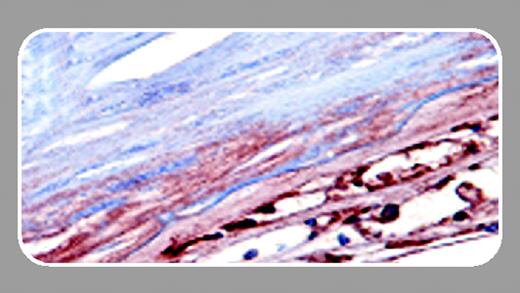In 1906, J. H. Wright concluded that platelets are detached portions of the cytoplasm of megakaryocytes.1 He was right: platelets are circulating, anucleate cytoplasts that posit at sites of vascular damage. Although they are critical effectors of hemostasis and thrombosis, it is clear that platelets also regulate inflammation, tissue repair, and immune responses.2 Their extended roles were revealed in the 20th century by classic bioassays and, more recently, by ground-breaking biochemical and molecular advances. Recent gene expression analyses provide valuable information on inherited platelet disorders and insights into platelet physiology. Ultimately, however, proteins govern cellular function. In this issue of Blood, 2 papers make significant proteomic inroads by globally profiling protein expression in platelets.
The primary tools used by both groups are separation and identification of proteins by 2-dimensional electrophoresis (2-DE) and mass spectrometric analysis. García and colleagues (page 2088) used this approach to analyze intracellular signaling cascades in platelets stimulated with thrombin receptor activating peptide (TRAP). They observed 62 differentially regulated features between quiescent and TRAP-stimulated platelets, including changes in the intensity and/or mobility of 2-DE signals. From these, 41 proteins are identified that largely fall into cytoskeletal, signaling, or protein processing categories. Because signaling is a primary focus of their paper, García et al concentrated on phosphorylated proteins that typically shift toward a more acidic isoelectric point (pI) upon cellular activation. A highlight of the paper is TRAP-dependent phosphorylation of regulators of G protein signaling (RGS) and Dok-2, an adaptor protein not known to be in platelets.
The observations by García et al complement a recent report by Maguire and colleagues,3 who analyzed the phosphotyrosine proteome in thrombin-activated platelets. Although platelet proteomics is a young field, this group, based at the Royal College of Surgeons in Ireland, has been at the forefront with several reports,3-5 including one in this issue of Blood that profiles the platelet secretome (page 2096). Here, Coppinger et al identify more than 300 proteins, 37% of which were known, that are released by human platelets in response to thrombin. The remaining two-thirds were not previously identified as platelet release products and, in some cases, these proteins are not known to be released from any cell. The authors characterize 3 of these—secretogranin III, calumenin, and cyclophilin A—and demonstrate that these proteins localize in platelets and are released upon activation. Furthermore, while absent in the normal vessel wall, secretogranin III and calumenin were detected in atherosclerotic plaques, and cyclophilin A was observed in proliferating smooth muscle cells. These results may have important clinical implications since platelets influence the development, progression, and end-stage complications of atherosclerosis.
An interesting facet of proteomics in platelets is its integration with genomics.5 Platelets, while being anucleate, contain numerous mRNAs, and a large percentage of these messages have corresponding proteins (see Coppinger et al and McRedmond et al5 ). Abundant mRNAs correlate well with constitutively expressed factors.5 In addition, specialized low-abundance messages are translated into protein by activated platelets, indicating that the platelet proteome is not fixed.2 In this regard, a number of the intracellular proteins identified by García et al are involved in biosynthesis and protein degradation.
The 2 reports in this issue set the stage for future studies. Further refinement and technical advances in proteomics will uncover novel information about platelet biology and suggest the possibility of new diagnostic and therapeutic strategies for thrombotic diseases.4 Indeed, it is an exciting time in the field, as we approach the platelet proteome at warp speed.


This feature is available to Subscribers Only
Sign In or Create an Account Close Modal